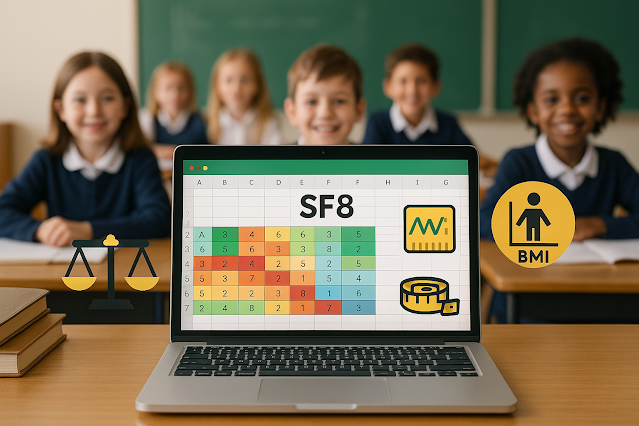Why Modernize SF8?
In today’s digital age, traditional pen-and-paper forms no longer meet the demand for efficient health and nutrition reporting in schools. That’s why an automated SF8 form with a BMI calculator is essential. This new approach not only saves time but also ensures accurate learner health data. The Department of Education's School Form 8 (SF8) is crucial in tracking each student’s nutritional status and height-for-age (HFA) metrics—but imagine doing it in seconds, not hours.

📘 What Is SF8 and Why It Matters?
The SF8 or School Form 8 – Learner’s Basic Health and Nutrition Report is a DepEd-mandated document that records every student’s physical wellness, particularly weight, height, BMI (Body Mass Index), and nutritional assessment. It's applicable to all grade levels, from Kindergarten to Senior High School. The traditional process is tedious, but integrating an automated BMI calculator not only makes the process faster but also reduces manual errors.
CLICK HERE TO DOWNLOAD SF8 NOW.
According to DepEd Order No. 13, s. 2017, maintaining accurate health records is vital for effective intervention and feeding programs. With this, teachers and school health coordinators can monitor the nutritional trends among learners and respond with targeted health strategies.
⚙️ How the Automated SF8 With BMI Works
This innovation is designed with built-in formulas to calculate BMI, classify nutritional status (such as Normal, Wasted, Obese, etc.), and auto-fill Height-for-Age assessments. Teachers simply input a learner's weight and height, and the system will instantly display BMI and its corresponding category using World Health Organization (WHO) growth standards.
The tool uses this formula:
BMI = Weight (kg) ÷ [Height (m)]²
Once BMI is determined, it automatically falls into a category:
-
Severely Wasted
-
Wasted
-
Normal
-
Overweight
-
Obese
Meanwhile, HFA classification determines if the learner is Severely Stunted, Stunted, Normal, or Tall, providing another layer of health assessment.
📈 The Benefits of an Automated SF8
Modernizing the SF8 form offers numerous advantages. First, it promotes data accuracy, minimizing human error in complex BMI calculations. Second, it drastically reduces workload for teachers and health officers who often have to compute dozens—if not hundreds—of learners manually.
Additionally, with its automated summary tables, schools can instantly generate reports by sex, nutritional status, and height-for-age, allowing quicker response to malnutrition and growth issues. According to the National Nutrition Council, timely health interventions are key to preventing long-term physical and cognitive issues in children.
📂 Why You Should Use This Version of SF8
This enhanced SF8 template is fully editable, Excel-based, and ready for school year roll-out. It’s designed based on the most recent forms distributed by DepEd and aligned with the 2017 SFRT standards. Whether you’re handling elementary, junior high, or senior high school learners, this tool ensures your health records are up-to-date and reliable.
It includes fields such as:
-
School Name, Grade, Section
-
Learner Reference Number (LRN)
-
Complete Name, Birthdate, Age
-
Weight, Height, BMI, BMI Category
-
Nutritional Status and HFA Remarks
It also auto-generates a Summary Table of results, so health coordinators can submit consolidated reports without delay.
✅ Trusted and Data-Aligned
This version follows data privacy protocols and is modeled after recommendations from DepEd Health and Nutrition Center (HNC) and UNICEF Philippines, which emphasize the importance of accessible digital health tools for education professionals.
